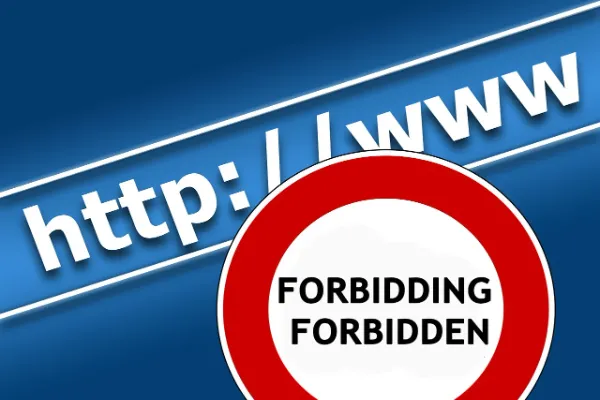Why Is “XXX” Considered Taboo on Websites?
In the vast and ever-evolving landscape of the internet, few labels are as instantly recognizable—and controversial—as “XXX.” Whether seen in domain names, search queries, or pop culture references, the triple-X symbol has become synonymous with adult content. But why is “XXX” so taboo, especially when it comes to websites? This article explores the cultural, historical, legal, and technological reasons behind the stigmatization of “XXX” in the digital realm.
1. The Historical Origins of “XXX”

The association of “XXX” with adult content dates back well before the internet. Historically, the triple-X rating was used by the Motion Picture Association of America (MPAA) to label films with extremely explicit sexual content. Although the MPAA dropped the XXX rating in favor of the NC-17 classification, the cultural imprint had already been made.
In the pre-internet era, adult bookstores, VHS tapes, and magazines often used “XXX” to signal erotic or pornographic content. As the internet developed, this label carried over, becoming a kind of universal shorthand for adult entertainment online.
2. Why “XXX” Is Considered Taboo
Despite being widely known, websites featuring “XXX” content are often pushed to the margins of the web. Here’s why:
a. Moral and Cultural Sensitivities
Sexual content is treated differently across cultures. In many parts of the world, especially in more conservative societies, openly displaying or accessing such material is considered immoral, shameful, or even criminal. This cultural stigma contributes heavily to why “XXX” is taboo.
b. Legal Restrictions
Many countries have laws regulating or outright banning the distribution of adult content online. Web domains containing “XXX” can be subject to censorship, legal scrutiny, or government blacklisting. Even in countries with relatively open policies, such content is often age-restricted and closely monitored.
c. Search Engine and Platform Censorship
Mainstream platforms like Google, YouTube, and Facebook have strict content policies that either block or heavily demote adult websites, especially those flagged with “XXX.” Search engines may penalize or delist these domains altogether, making them less discoverable and further reinforcing their “taboo” status.
d. Brand Safety and Advertising
Major advertisers avoid being associated with adult content to protect their brand image. As a result, websites labeled as “XXX” are typically excluded from traditional advertising networks, which severely limits their revenue potential and reinforces their marginalization.
3. The .xxx Domain and Its Reception
In 2011, the introduction of the .xxx top-level domain (TLD) aimed to offer a designated space for adult content online. While technically successful, the TLD faced backlash:
- Many adult sites refused to adopt it, fearing it would make them easier to block or censor.
- Critics argued it could lead to the creation of a digital “red-light district,” further stigmatizing adult content creators.
- Some non-adult companies preemptively bought .xxx domains just to protect their brand names from misuse.
The .xxx domain ultimately became symbolic of the internet’s complex relationship with adult material—acknowledging its prevalence while still labeling it as separate and less legitimate.
4. Technological Measures Reinforce the Taboo
Modern technologies, including AI-based filters, parental control systems, and “safe search” algorithms, are designed to detect and block “XXX” content. These tools are built into browsers, schools’ internet systems, and even mobile carriers.
While these measures protect children and enforce community guidelines, they also contribute to the “underground” status of XXX websites, making them feel illicit or forbidden, even when legal.
5. The Paradox of Popularity and Shame

Perhaps the most intriguing aspect of the XXX taboo is the paradox of its popularity. Adult content is among the most searched-for and consumed material on the web. Yet, it remains socially stigmatized. This double standard reflects deeper societal discomforts with sexuality, especially in public or digital spaces.
In this way, “XXX” acts not just as a label, but as a boundary between the acceptable and the unspeakable.
6. Beyond the Taboo
The taboo around “XXX” on websites is not just about morality—it’s about control, privacy, identity, and power. As society continues to evolve, conversations around sexuality and censorship are becoming more open and nuanced. Still, the digital branding of adult content with “XXX” ensures that it stays visually and culturally separate from the mainstream web.
Whether this separation is protective or discriminatory remains up for debate, but one thing is clear: “XXX” will always be more than just three letters—it’s a symbol of the internet’s most complex cultural divide.
7. A Note on Safe Browsing: Trusted XXX Sites in a Taboo Landscape
For those navigating the world of adult content while staying within legal and ethical boundaries, it’s important to choose platforms that prioritize safety, privacy, and user consent. Despite the lingering stigma around the “xxx taboo,” there are reputable websites that operate transparently and ethically. Popular and generally considered safe options include Pornhub, xHamster, YouPorn, ManyVids, and Erika Lust Films—the latter being known for ethical and feminist adult content. These platforms offer age verification, strong content moderation policies, and secure browsing experiences. Always use a VPN, enable private mode, and avoid suspicious pop-ups or downloads when visiting any xxx site to further protect your privacy and device.
8. Are XXX Taboo Videos Safe to Download—or Are They a Virus Risk?
While streaming adult content is generally safer, downloading xxx taboo videos can pose serious risks to your device and personal data. Many shady websites—especially those with aggressive pop-ups or misleading download buttons—embed malware, ransomware, or spyware into video files disguised as legitimate content. Because taboo or niche material often exists in less-regulated corners of the web, users may let their guard down, making them easy targets for hackers. To stay safe, only download from verified adult platforms with secure HTTPS connections, use updated antivirus software, and avoid pirated or peer-to-peer file-sharing sites that are notorious for spreading infected files. In the world of xxx taboo content, safety starts with smart browsing.
9. Why You Shouldn’t Believe Everything You Hear About XXX Taboo Stories
The internet is full of xxx taboo stories—from wild fantasies to supposed “true confessions”—but it’s important to approach them with skepticism. Many of these stories are either completely fictional, exaggerated for clicks, or created to appeal to niche fetishes rather than reflect reality. Some are even part of scam websites designed to lure users into downloading harmful content or paying for fake services. Believing in these stories can lead to unrealistic expectations, misinformed views about sexuality, or exposure to dangerous and illegal material. Always remember: just because something is labeled as “real” or “true” in the world of xxx taboo content doesn’t mean it is. Critical thinking is your best defense in separating fantasy from fact.
10. Is It Healthy to Watch XXX Taboo Videos?
Whether watching xxx taboo videos is healthy depends on a variety of factors, including the content itself, the viewer’s mindset, and how frequently it’s consumed. In moderation and within legal boundaries, adult content—even taboo-themed—can be part of a normal and healthy sex life. It may help individuals explore fantasies privately, reduce stress, or improve intimacy with partners. However, if consumption becomes excessive, interferes with relationships, or involves illegal or non-consensual material, it can lead to emotional distress, unrealistic expectations, or even compulsive behavior. The key is mindful viewing: choose ethical sources, stay self-aware, and never let fantasy blur the lines of consent and reality. Like any form of media, xxx taboo content should be approached responsibly.